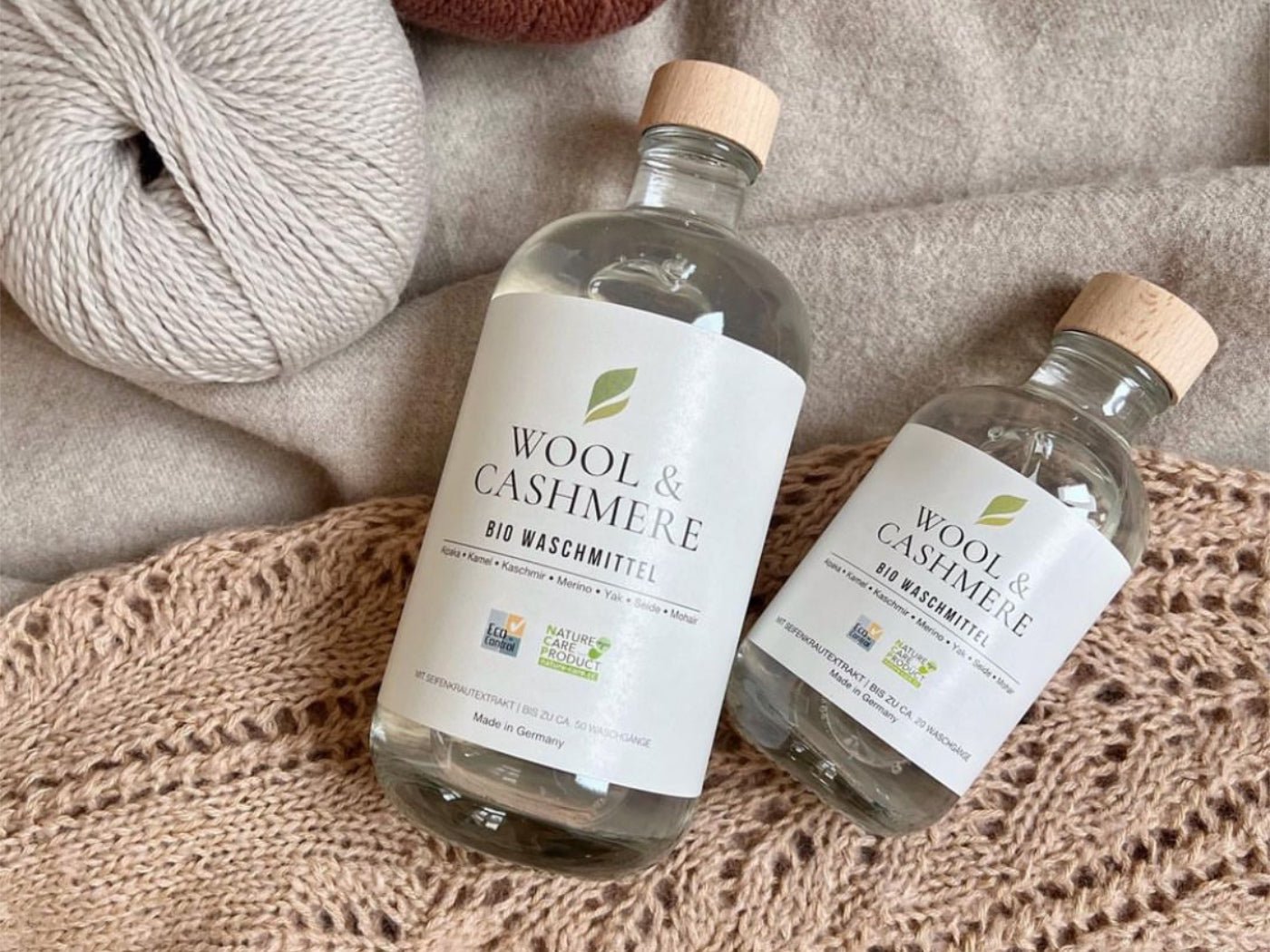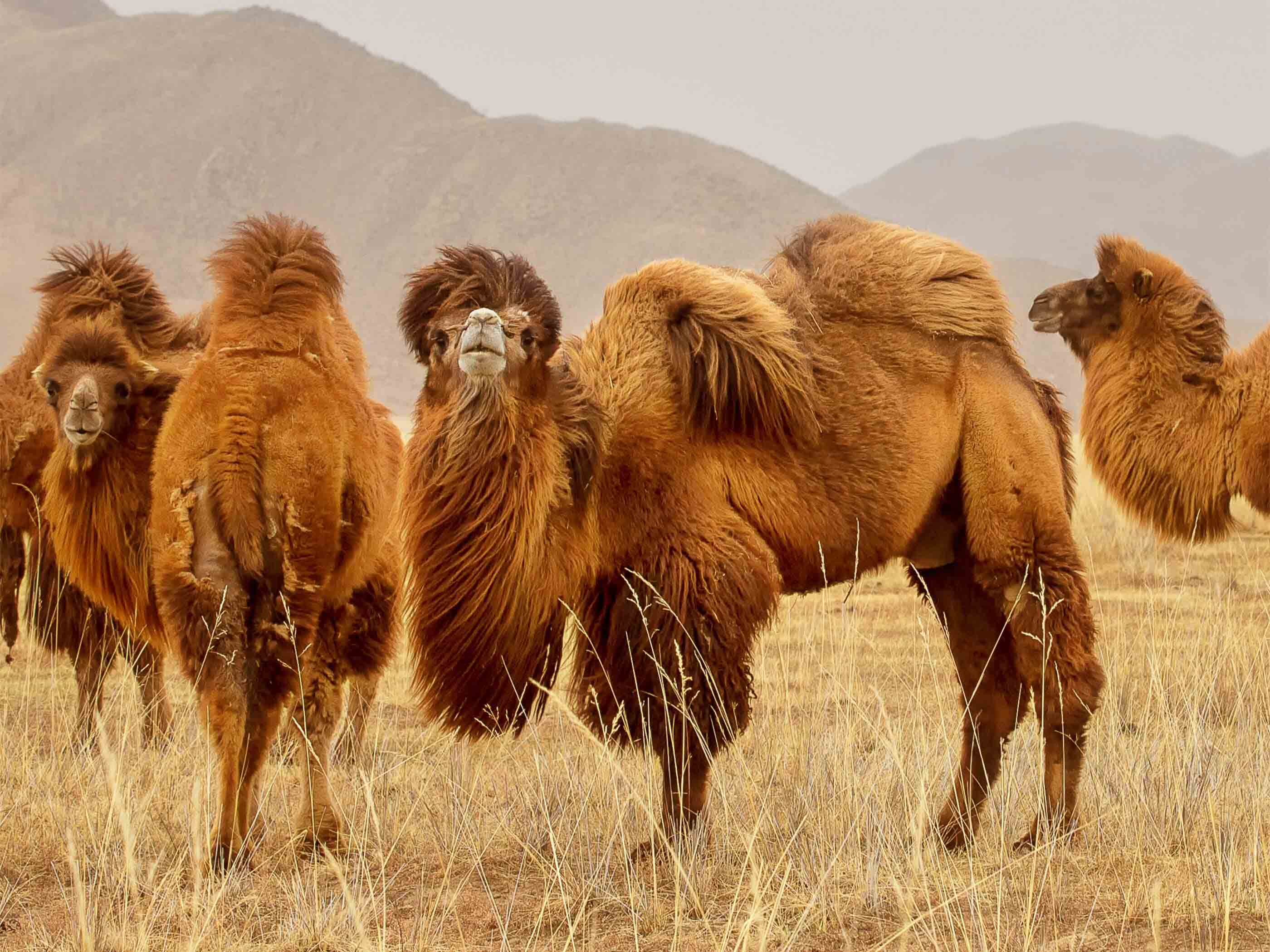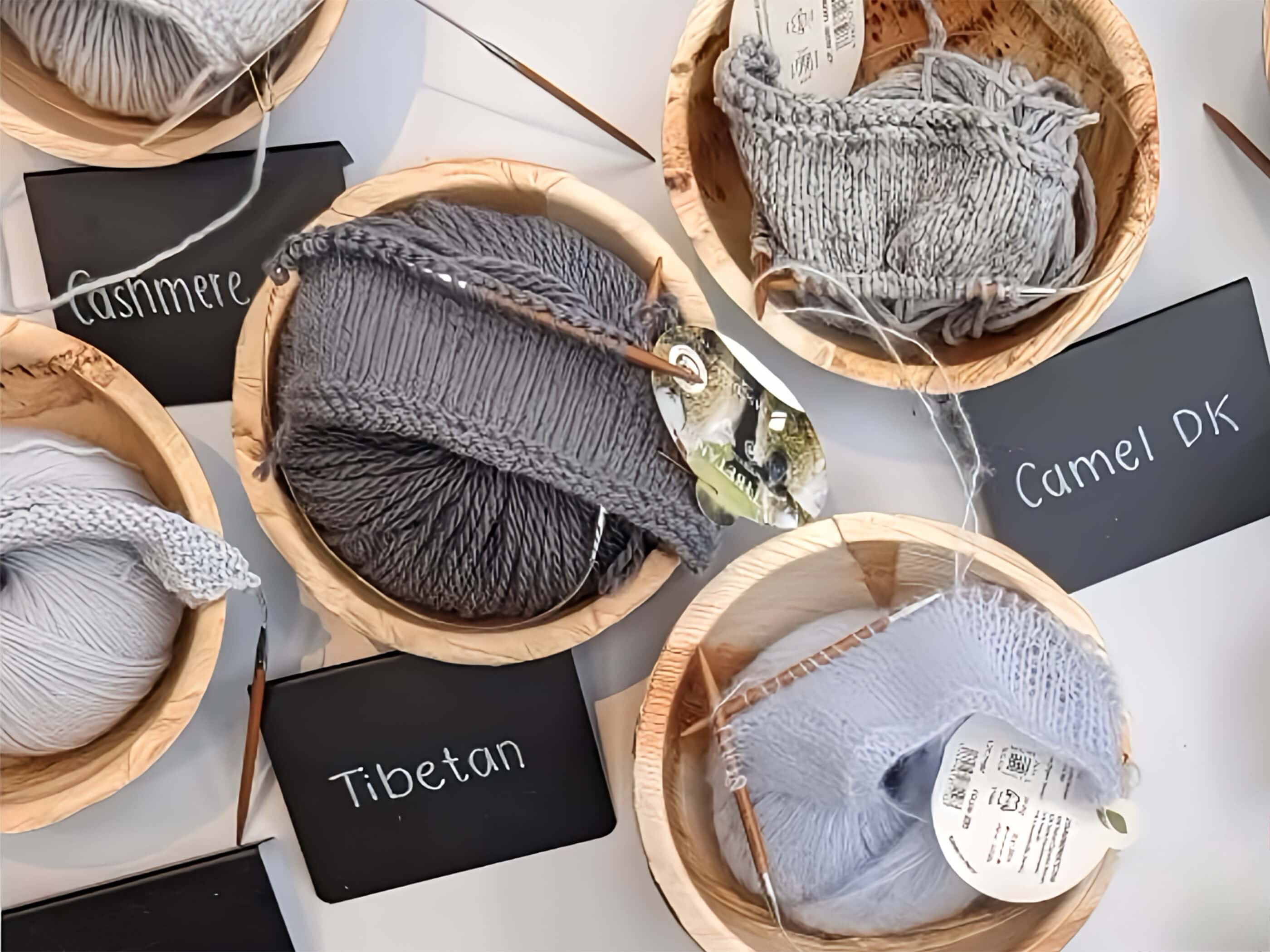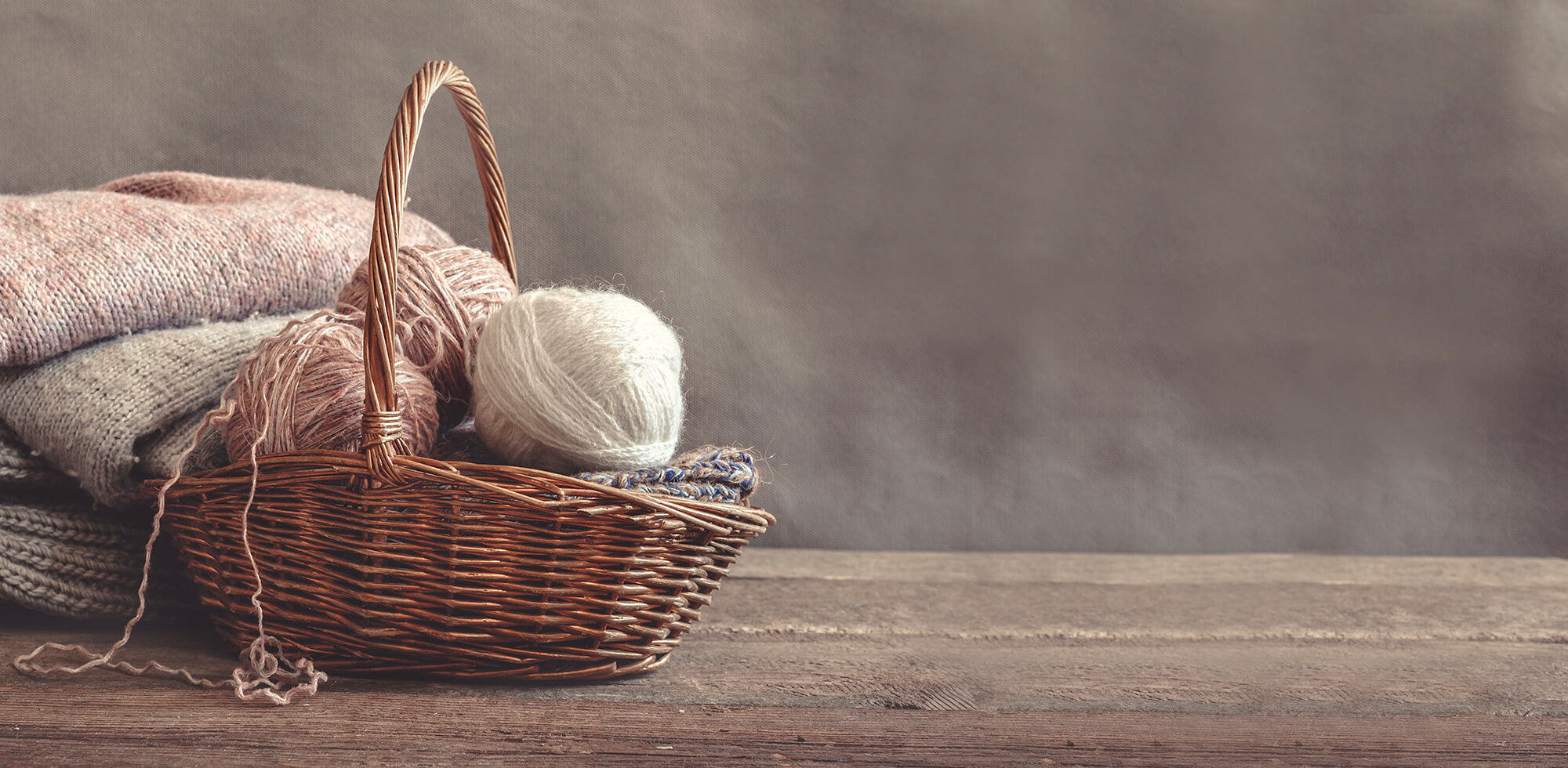By Claudia Ostrop
Wool care is actually quite simple!
… as long as you follow a few simple rules. Let's first take a look at the reason why wool behaves differently from other fibres such as cotton when washed. Sheep wool – like most animal fibres – is made up of fine strands with a scaly surface, similar to a fir cone. When the fibre is dry, these scales lie close to the surface, making it smooth. When exposed to moisture, the scales stand up and flare out. If they move against each other when being washed, they can only slide past each other in one direction. If they meet each other in the opposite direction, the scales become entangled. And then there is no turning back - the fibres bond together, getting tighter and tighter. The airy-loose wool fibres become a firm, compact felt. This effect is intensified by heat: the higher the water temperature, the more the wool fibre swells. This makes the scales spread out even more, making it easier for them to interlock. The type of wool used for the garment determines if it will felt or not, and by how much. Under the above conditions, a pullover made of fluffy, light wool with the fibres lying loosely next to each other will felt much more easily than a pullover knitted with a tightly twisted yarn. And then there is specially treated wool that should not felt at all.
Superwash
In order to prevent wool and woolen garments from felting and shrinking, the yarn has to undergo a process known as Superwash. This procedure treats standard wool fibres so that they no longer tangle. Items made from superwash yarn can be washed in the washing machine.
To prevent the yarn from felting, parts of the scales are chemically removed from the fibre. This smoothing makes it more difficult for the individual fibres to get entangled. Finally, the fibres are coated with a thin layer of a special finishing film, which is resistant to washing, reacting and combining with the creatine in the wool. Wool processed in this way can be washed in the machine without felting. Superwash yarn is perfect for socks, as they tend to be washed more often than say, sweaters or scarves.
How do I wash my woolen garments?
The good news is that wool does not have to be washed very often, due to its natural anti-bacterial and odour-resistant properties. Wool does not absorb dirt as easily as other fibres and has the ability to clean itself naturally. Wool fibre has a water-repellent outer sheath, which means that liquid dirt remains on the surface of the wool and can be removed after drying, by carefully brushing or shaking it off. The inside of the wool is made up of two types of fibre that absorb different amounts of moisture. As a result, they swell to different sizes, causing friction which separates the dirt – an inbuilt self-cleaning process! Wool can also neutralize bad odours. To freshen up your woolen garments, simply hang them out to air or hang them in the bathroom while showering.
Hand wash or machine wash?
Of course the time will eventually come when you will want to, or have to, wash your woolen garment. If you’re not sure what to do, take a look at the care label first. Unfortunately, a hand knit sweater or scarf probably won’t have a care label, but usually you will find care instructions on the label that came with the yarn.
These are the fibre care symbols you will find on the labels of our Pascuali yarns:

1 - Hand wash only: Maximum temperature 30°Celsius/86°Fahrenheit.
2 & 3 - Machine washable: The maximum temperature is shown on each symbol.
4 - Dry flat
5 - Iron at the lowest temperature setting
6 - No ironing
If you do not have any information on how to wash the item, it is advisable to wash it by hand in lukewarm water. But be careful though, hand washing may not always be the gentlest way to wash your woolens! The water might be a little too hot, or you may agitate it too much, using too much detergent. Modern washing machines, with their gentle programs, may actually be better for your woolens. If, on the other hand, your washing machine is a bit older, or not quite so high-tech, hand washing may be the better option for your knitwear. This is a decision that only you can make.
Detergents? Shampoo? Soaps?

So, you want to hand wash a handknit sweater. Fill a bucket or tub with lukewarm water and add a squirt of a wool wash. Please do not use normal detergent!
Why not? Most detergents contain proteases. These are enzymes that are responsible for splitting proteins, thereby removing blood or food stains. However, since wool consists of protein, a normal detergent would also attack and weaken the fibre. In addition, the pH value of special wool detergents is lower, which protects the fibres and they don't contain optical brighteners.
You may have heard that baby shampoo is best for washing woolens. While it is fine for the fibre, it is actually not necessary. Products specifically produced for washing woolen garments and accessories and are often much cheaper than shampoo! In addition, wool specific washing products create relatively large amounts of foam, which can also help to provide additional protection against friction and thus felting as it soaks into the fiber strands.
Once you have added lukewarm water and your chosen wool washing product to the tub, soak your garment – preferably turned inside out – for the required time (20 minutes should be sufficient). Don't agitate the garment too much! Drain the water nd then rinse carefully with clear, lukewarm or cold water. You can also use special wool washing products with a high lanolin content which are not rinsed off after washing. Check the instructions on the bottle for info on this!
Once it is rinsed (if necessary), gently squeeze the excess water out of your garment. Don't wring or squeeze it too much! It's best to put a large towel on top of a laundry rack, so that air can circulate underneath it. Lay the sweater out and pull it into shape if necessary. You could also wrap it in a towel to get even more moisture out of the fibres, then let it dry, lying flat.
As wool can hold a lot of water it would be much too heavy to dry hanging. A sweater would quickly stretch out into a tunic due to the weight of the water. Only small items like socks or mittens can safely be hung to dry.
Wool garments and accessories should never be dried on a radiator or in the blazing sun! The heat damages the fibre and the sun bleaches it. After drying, pull the garment back into shape or steam it very carefully using the wool setting on your iron, if necessary.
After wash care – storing your garments and accessories
Your clean and dry sweater – and this of course applies to all your woolen knitwear – should be stored folded flat. If you put your sweaters away for the summer, you can store them in airtight bags. Otherwise stack them loosely and take them out of the wardrobe from time to time and shake them out. Moths don't like that, so it helps combat infestation and avoid any nasty surprises! Of course, your knitwear should be clean when stored away as moths are attracted by food stains and body oils. You could also invest in moth balls or bags of lavender or cedar wood to scare them off. Moths don't like the smell and it should make them stay away!
If you have worn a sweater for a day, you should not put it away immediately, but let it air for a day. Just hang it over the back of a chair and put it away the next day. This helps the fibres to regenerate and means that you will be able to enjoy your knitted garment for many years.
The so-called pilling of knitwear can be annoying. This is when small bobbles form on the surface of your knitted garments. Pilling is completely normal and almost completely unavoidable with wool. The annoying fuzzballs are caused by the felting of the fibres, as described above. If fibres are exposed to friction, especially in combination with heat and moisture, they felt. This is why pilling often occurs under the arms and on the undersides of sleeves. However, the fact that some yarns pill more than others has nothing to with the quality of the yarn! It is simply that the fibres in a multi-plied yarn don't felt as easily as a fluffy, single ply yarn. This is noticeable in the number and size of the felt knots.
There are a lot of little helpers on the market that can be used to get to grips with pilling. Fabric shavers cut the bobbles with rotating blades and collect them in a small container. Pilling combs and brushes can also be used to smooth knitted fabric. Just don't wait too long to do it - if you shave off the fuzzballs regularly, your favourite piece will stay beautiful for a long time! And of course be gentle – if you brush or comb your knitwear too heavily, you may create even more pilling as you destroy the fibre.
We hope we have given you some practical advice on how to take care for your woolen garments, whether they are handmade or shop bought. It is not that difficult! Just follow a few simple rules; the care of woolen garments and accessories is relatively easy!




